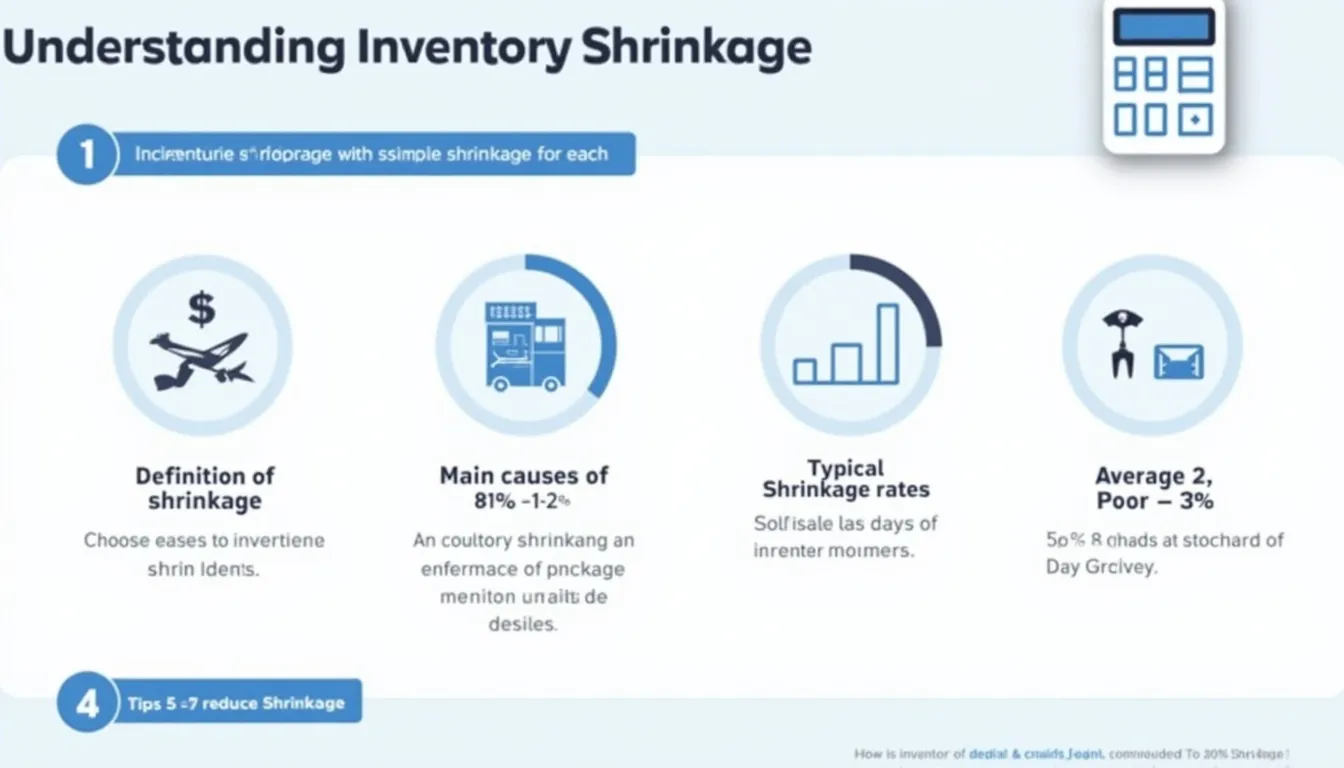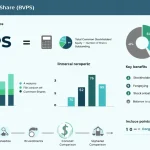Inventory Shrinkage Rate Calculator
Is this tool helpful?
How to use the tool
- Recorded Inventory: Type the book value of stock before count.
Example 1: 50 000 Example 2: 30 000 - Actual Inventory: Enter the value after a physical count.
Example 1: 49 000 Example 2: 28 500 - Press “Calculate”: The tool returns both decimal and percentage shrinkage.
Formula used
$$ \text{Shrinkage Rate}= \frac{\text{Recorded} – \text{Actual}}{\text{Recorded}} $$
Example calculations
- 50 000 vs 49 000 ⇒ (50 000 – 49 000)/50 000 = 0.02 → 2 %
- 30 000 vs 28 500 ⇒ (30 000 – 28 500)/30 000 = 0.05 → 5 %
Quick-Facts
- Average global retail shrinkage: 1.4 % of sales (National Retail Security Survey, 2022).
- U.S. retailers lost $94.5 billion to shrinkage in 2021 (NRF, 2022).
- Shrinkage below 2 % is widely deemed acceptable (Deloitte Retail Benchmark, 2023).
- GAAP requires disclosure when shrinkage materially affects cost of goods sold (FASB ASC 330).
- ISO 9001:2015 urges “measurement and evaluation of non-conforming output,” including shrinkage (ISO 9001, 2015).
FAQ
What is the inventory shrinkage rate?
The shrinkage rate shows the share of stock value lost through theft, damage, or errors before sale (NRF, 2022).
How does the calculator work?
It subtracts actual inventory from recorded, divides by recorded, and displays the result as a decimal and percentage—no data leaves your browser.
What is an acceptable shrinkage percentage?
Retail analysts flag anything above 3 %; top performers keep it under 1 % (Deloitte Retail Benchmark, 2023).
Why does inventory shrink?
Primary causes are external theft (37 %), employee theft (28 %), and administrative mistakes (25 %) (NRF, 2022).
How often should I measure shrinkage?
Quarterly counts suit most retailers; high-risk sectors run monthly cycles for faster intervention (KPMG Retail Outlook, 2023).
How can I reduce shrinkage?
Combine CCTV, employee training, RFID tracking, and regular audits; integrated programs cut losses by up to 50 % (ECR Retail Loss Group, 2021).
Does shrinkage impact taxes?
Yes. U.S. businesses can deduct verified shrinkage as cost of goods sold under IRS Publication 334, lowering taxable income.
Can the tool process negative or zero inputs?
No. The form blocks negative or zero numbers because shrinkage requires positive recorded inventory and non-negative actual values.
Important Disclaimer
The calculations, results, and content provided by our tools are not guaranteed to be accurate, complete, or reliable. Users are responsible for verifying and interpreting the results. Our content and tools may contain errors, biases, or inconsistencies. We reserve the right to save inputs and outputs from our tools for the purposes of error debugging, bias identification, and performance improvement. External companies providing AI models used in our tools may also save and process data in accordance with their own policies. By using our tools, you consent to this data collection and processing. We reserve the right to limit the usage of our tools based on current usability factors. By using our tools, you acknowledge that you have read, understood, and agreed to this disclaimer. You accept the inherent risks and limitations associated with the use of our tools and services.







